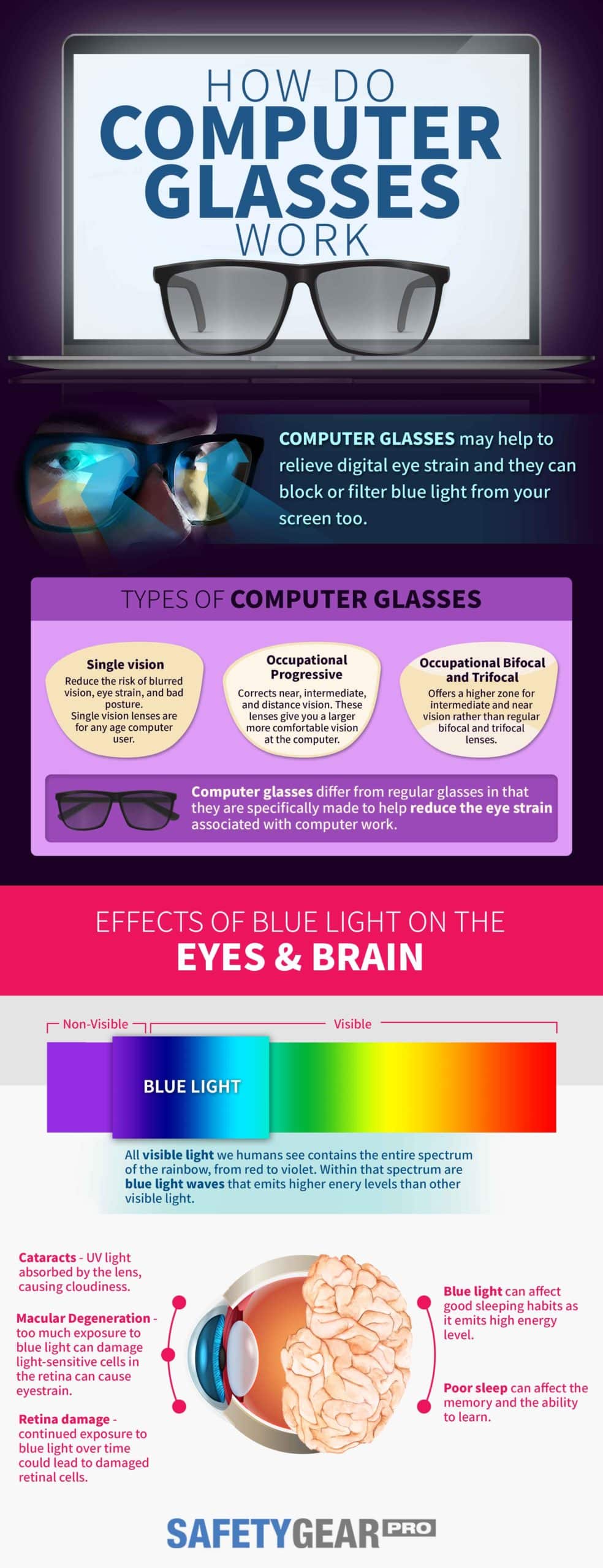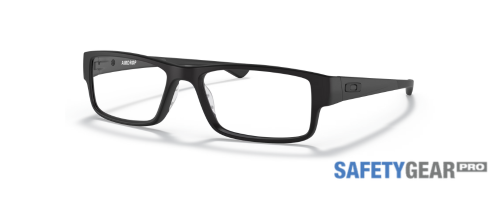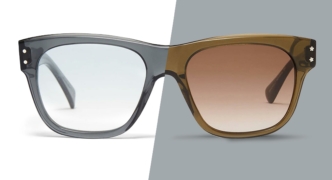
Technological advances have driven many changes, from how people work to how they spend their free time. As young and old alike continue to invest more and more time using computers, laptops, TVs, and cell phones, more and more people are experiencing digital eye strain. Symptoms range from sore, dry, or irritated eyes to blurred vision, eye twitching, headaches, fatigue, back and neck pain, and difficulty sleeping. These symptoms may be reduced or relieved altogether with the use of computer glasses.
Computer glasses offer a potential solution to alleviate these issues. Unlike regular glasses, computer glasses reduce eye strain associated with extended computer work.
What Are Computer Glasses and How Do They Work?
Computer glasses are prescription glasses that allow you to focus your eyes on the screen when doing computer-related tasks.
Most individuals spend approximately eight hours a day in front of a computer, making them more susceptible to vision-related problems. It’s common to experience eye fatigue and irritation by the end of a workday.
Computer glasses have prescription lenses or without them. The lenses feature an anti-reflective coating that blocks reflections from both the front and back lens surfaces, filtering out blue light and reducing screen glare. Lenses are also tinted to boost screen contrast and make it easier to see images.

Types of Lenses
Given that computer screens are usually positioned at a distance of 20-26 inches from the user’s eyes, this is considered the intermediate zone. However, individual eye characteristics may differ in this zone, much like in regular glasses. Computer glasses are available in three types of lenses.
- Single Vision Lenses: These lenses help reduce the risk of eye strain and blurred vision. They are suitable for users of all ages.
- Occupational Progressive Lenses: These lenses correct the near, intermediate, and distance vision. While they provide more comfortable vision for computer use, they may not be ideal for tasks requiring longer-distance focus.
- Occupational Bifocal and Trifocal Lenses: These lenses prioritize intermediate and near vision, catering to specific computer-related needs with customization.
Benefits of Wearing Computer Glasses
The advantages of computer glasses include glare reduction, increased contrast, and extended screen-viewing comfort. In the workplace, you can minimize the need to peer over your glasses or hunch closer to the computer screen to read it more clearly. These glasses promote clearer vision, reducing the strain on your back and neck.
Are Computer Glasses Right for You?
If you frequently deal with eye strain, computer glasses could be the solution you need to enhance your comfort. To find the ones that are right for you, first, have your eyes examined by a professional who can write you a prescription if needed. You can then order computer glasses online here at Safety Gear Pro.
FAQs
How do I know if I have digital eye strain?
When people experience eye strain, they often feel tired, experience soreness, and may notice their eyes becoming watery or dry. Eye strain can also lead to a burning sensation in the eyes, blurred vision, and double vision.
What are the ways to reduce my eye strain?
To reduce eye strain:
- Follow the 20-20-20 rule: Pause every 20 minutes and shift your focus to something 20 feet away for 20 seconds.
- Minimize overhead lighting and use a matte screen filter to reduce glare.
- Maintain good posture and sit at an arm’s distance from the computer screen.
- Increase text size on your devices for easier reading.
- Limit cellphone use before bedtime to avoid sleep disruptions caused by blue light.
Consider using blue light computer glasses to block screen glare and protect your eyes from digital device strain. These glasses can be helpful, even if you have perfect vision.
What Is Blue Light?
Blue light is a part of the color spectrum from various sources, including the sun and electronic devices like smartphones and TVs. It has a shorter wavelength than other colors.
How does blue light affect my eyes?
Blue light can result to digital eye strain, resulting in symptoms such as eye discomfort, blurred vision, and headaches. It can also disrupt sleep patterns and may have long-term health effects.
Do I Need a Prescription for Computer Glasses?
No, a prescription is not always needed for computer glasses. They can benefit anyone exposed to digital screens, regardless of their vision. However, if you have specific vision needs, consulting an eye care professional for a prescription can provide tailored lenses for your comfort.































